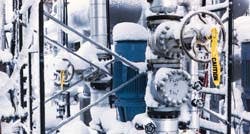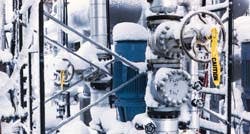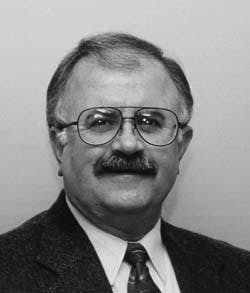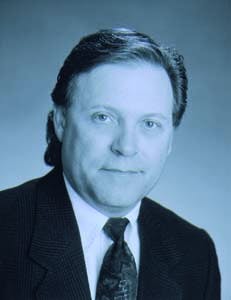Lowell Michael Gdula
Tesoro Petroleum Corp.
Kenai, Alas.James A. Wentworth
Litwin Engineers & Constructors Inc.
Houston
In late November 1994, San Antonio-based Tesoro Petroleum Corp. and Litwin Engineers & Constructors Inc. completed the relocation and refurbishment of a $25 million vacuum unit at Tesoro's 72,000 b/d Kenai, Alas., refinery.
The addition of the vacuum distillation unit is a critical component in Tesoro's market-driven strategy to enhance operating profits by maximizing production of higher-margin products such as gasoline and jet fuel.
With its new vacuum distillation unit, Tesoro has reduced production of lower-value residual fuel oil while recovering more lighter, high-value material. This investment is projected to yield increased operating income of $9-15 million/year, an after-tax internal rate of return of 35%, and a payback period of 2.5 years.
THE DECISION
The economic and strategic merits of purchasing and relocating an existing vacuum unit vastly outweighed those of constructing a new unit on site. The cost difference between the two options was estimated to be $3-5 million (overall installed cost).
The vacuum unit was purchased from Fletcher Oil & Refining Co., which owns a shutdown refinery in Carson, Calif. Salvaging all the major equipment from the relatively new unit (commissioned in 1989 and operated for only 18 months) resulted in a majority of the cost savings.
Although the unit required significant modification, the additional time and money necessary to build a grassroots unit ultimately drove the decision toward relocation and refurbishment. Fig. 1 (123436 bytes) shows a flow diagram of Tesoro's Kenai refinery.
PROJECT SCHEDULE
To benefit fully from Tesoro's new strategy and the availability of Fletcher's vacuum unit, the project timeline needed to be compressed dramatically. The 3 years that typically would be required for permitting, constructing, and starting up a grassroots unit was not acceptable.
Ultimately, project pressures dictated completion of the project within 1 year-a schedule that is rigorous, even for the refurbishment of an existing unit. If the vacuum unit had not been ready for start-up by early December, project completion would have been delayed unavoidably by the harsh Alaskan winter and its limited daylight hours.
The ability to salvage equipment also contributed to significant reductions in the cost and time schedule.
Had it been necessary to build and install a new heater and vacuum tower alone, the project would have been driven into a second year.
Acceleration of the schedule was supported further by the immediate availability of Fletcher's vacuum unit data, which was required by all engineering disciplines involved in the project (civil, structural, piping, instrumentation, and electrical). The exact size of major equipment, for example, was known at the inception of the project, which facilitated the concurrent layout of piping systems, conduits, and foundations, which also saved time.
Tie-ins were performed at the refinery during the scheduled refinery turnaround in September 1994, thus also minimizing downtime. Ultimately, the vacuum unit refurbishment and associated off sites were completed in 9.5 months, 2.5 months less time than was allotted, and a full year and a half less than was projected for construction of a grassroots unit.
NEW EQUIPMENT
Of the more than 100 pieces of equipment associated with the vacuum unit project, 42 were additions required by the design and code requirements. These additions enabled the unit to:
- Handle higher temperatures (more than 6500 F.)
- Facilitate throughput of 19,620 b/d by changing the vacuum ejector package, installing larger nozzles and new internals, repacking the light vacuum gas oil (LVGO) and heavy vacuum gas oil (HVGO) sections of the tower, and adding larger pumps and product coolers.
- Accommodate colder weather and enhance reliability with electric motor drivers, which replaced the original steam turbines.
- Increase power requirements with a new motor control center, utilizing 25-ky supply from the local authority.
- Replace the control room's overloaded distributed control system with a new Foxboro Intelligent Automation (IA) system featuring process graphic operating displays as well as group displays typical of the old system.
In addition to enhanced alarming, reporting, and control capabilities, the Foxboro IA system provides a platform for advanced process controls (developed by the Litwin Process Automation group).
DISMANTLING, TRANSPORT
Six weeks were allowed in the schedule for dismantling, with an additional 17 days allotted for the voyage to Kenai and off-loading of the unit.
On Mar. 15, 1994, Tesoro received word that the permitting phase was being expedited. Litwin (responsible for engineering, procurement, and construction) mobilized the dismantling company and secured the tug and barge movement.
During the dismantling phase, the equipment was cleaned and inspected, instrument and process valves were refurbished, and cut points for the dismantling were located, marked, and tagged. The vacuum unit reached the docks in Long Beach, Calif., on Apr. 29, 1994, within the allotted 6 weeks.
The barge, which was 300 ft x 80 ft, arrived in Long Beach on Apr. 30. Loading crews worked around the clock, enabling the barge to leave port on May 3.
Because of good weather, the voyage required only 14 days. Docking took place on May 17 at Rig Tenders in Nikiski, Alas., directly across the highway from the Tesoro refinery. Offloading and transportation to the site took place on May 20.
The 200,000-lb vacuum tower was off-loaded using two 150-ton Manitowoc cranes. The tower was transported to the refinery with a steerable, trailing dolly set, rated for 400 tons of capacity. All materials and equipment reached the site by May 22, only 63 days after the beginning of the dismantling process.
INSTALLATION
On Apr. 7, while Tesoro and Litwin were dismantling the unit in Carson, Calif., Tesoro Alaska received the construction and operating permits for the Kenai project from the Alaska Department of Environmental Conservation. With mobilization and first excavation beginning on Apr. 11, Litwin issued the civil subcontract on Apr. 8.
The installation of foundations and underground piping was well under way in preparation for the barge's arrival and resetting of the major equipment and steel structures. The erection of the relocated equipment began in May and was completed upon arrival of the last pieces of new equipment in September.
TIE-INS, START-UP
This challenge was scheduled with consideration for anticipated material and equipment deliveries. Working a double shift 24 hr/day, the crew met the deadline and installed the 49 crude unit tie-ins, a new water softener package, and associated tie-ins in the existing sour water stripper system.
In August, Tesoro and Litwin explored the feasibility of accelerating the completion of the project from Dec. 20 to Nov. 23, and both companies agreed to the new deadline. Material and equipment deliveries were expedited immediately, work weeks were extended, and a second shift was added. Fortunately, the weather in Kenai remained unseasonably warm and dry throughout September and part of October.
Nontraditional opportunities to gain time were examined during preparation for start-up. As a result, Litwin's field engineering teams and Tesoro's operations crews worked in parallel, rather than sequentially. The teams coordinated to accomplish punch-out, hydrotesting, release for insulation, operations process safety review, checkout, and overall acceptance.
The stepped-up time schedule, combined with the coordination of vendors and service companies in different parts of the country, was the largest challenge of the project. Key to meeting the schedule, however, was ,the mobilization of the barge in Hawaii that hauled the vacuum unit from Long Beach to Kenai. (As most barges are committed months in advance, Litwin and Tesoro had no alternative but to accept the barge and tug's limited availability.)
Because new foundations were placed in the same layout as in the Fletcher plant, the erection of the vacuum unit progressed smoothly. In addition, reinforced polyester sheeting had been used on the excavation plot before construction. This step minimized the depth of frost penetration into the ground and facilitated mass excavation of the site and the pouring of the first foundations.
At the end of October, the weather ceased cooperating. The first of four winter storms hit Kenai on Nov. 7, dumping about 18 in. of snow and reducing temperatures to -10 F. for about 5 days. Another 24 in. of snow fell when the temperature began to increase.
At this point, process lines were being tested and the wiring and cabling processes were ending, as were other tasks that were nearly impossible to accomplish with heavy mittens and gloves (Fig. 2).
To keep the line ice-free, when the temperature hit 26 F. or more, the joint crews performed hydrotesting on the lines as quickly as possible. All efforts were concentrated on controlling the working environment without jeopardizing the safety of the workers and plant.
The third and fourth storms hit consecutively during the third week of November, depositing more than 50 in. of snow-the heaviest snowfall in more than 90 years. Despite the weather, mechanical completion was achieved on the scheduled date of Nov. 23, just 7.5 months after environmental permits were secured.
During start-up on Thanksgiving day, the temperature dropped to -22 F., with a wind chill factor of -50 F. Diesel was circulated to help warm the unit and all the utilities already had been energized.
As the feed (crude tower bottoms) was introduced on Dec. 3, 1994, operating temperatures were increased and the diesel was purged from the unit. Within 4 days of commissioning, the unit was running and sending on-spec products to storage.
CRUDE, PRODUCTS
Fig. 3 (67997 bytes) shows how the vacuum unit project will change Tesoro's split between heavy and light products.
Tesoro's refinery primarily runs a mixture of Alaska North Slope crude, Alaskan Cook Inlet crude, and a purchased blend of middle distillates. The vacuum unit was designed to run crude oil blends to achieve required bunker fuels specifications.
The unit also was designed to produce optimum fractionation between LVGO and HVGO. The LVGO cut is desirable because of Tesoro's strategy to maximize gas oil feed to the refinery's hydrocracker, while the HVGO is slated for sale on the open market.
As the vacuum unit at the Fletcher refinery was used to produce a gas oil feedstock for its fluid catalytic cracking unit, changes in equipment utilization needed to be made. Tesoro's vacuum tower bottoms are blended with purchased cutter stock to obtain different viscosity values, as specified by current marketing contracts. Fletcher, on the other hand, used its vacuum tower bottoms as blended stock for the asphalt market.
OPERATING CHANGES
The vacuum unit was redesigned as a stand-alone unit, capable of processing all the crude tower bottoms from Alaska North Slope crude and Cook Inlet crude blend.
To achieve the heavy vacuum gas oil (HVGO) and light vacuum gas oil (LVGO) cutpoints (respectively, 1,050 F. and 900 F.), Litwin simulated each of the sections within the tower and determined that the existing LVGO/HVGO section would have to be replaced with high-efficiency structured packing.
The other beds within the tower were reused and reinstalled after the relocation. Each of the total draw trays was evaluated, but only the LVGO tray required replacement.
Other changes occurred due to the increased liquid yield in the column. The existing LVGO circuit was modified to increase the heat-removal capacity required by the more rigorous fractionation. For this application, Tesoro opted to use equipment located within the crude unit that had been idled due to previous process changes.
The HVGO circuit also required modification to increase the amount of cooling.
To maximize the amount of HVGO recovered from the bottoms stream, a study was performed to determine the optimal flash-zone conditions, given the existing tower parameters and current refinery economics. The most economical solution was to accommodate a flash-zone pressure of 25 mm Hg and a temperature of 720 F. To reach this flash-zone pressure, however, the existing vacuum system required replacement.
A new set of parallel ejectors was installed to ensure the ability to achieve HVGO cutpoints greater than 1,100- F., should the economic justifications arise. Each of the ejectors has the ability to handle gas loads for a flash-zone temperature of 720 F. The existing unit heater was adequate to handle the heat duty required, but the radiant tubes were replaced.
CORROSION CONCERNS
Because of the lower-grade metal-lurgy in part of the unit, concerns about corrosion arose as a result of the extra firing during start-up of the heater and the increased feed temperature requirements. Because of these changes, feed preheat exchangers, where temperatures were expected to approach material limitations, were replaced, as was the HVGO piping system to the tower.
New piping also was installed in specific areas where the expected lifetime would be less than 4 years.
OFFGAS
To meet environmental guidelines for the refurbished unit, the offgas from the unit needed to be treated before being sent to the refinery fuel system. Because of the remote location of Tesoro's refinery and the environmental problems associated with the caustic wash system, Tesoro decided to compress this offgas into the low-pressure fuel gas header, which is scrubbed with amine to remove H2S.
STEAM GENERATION
To maintain maximum safety within the unit, all spared equipment was placed on separate electrical power supplies.
To utilize fully the waste heat generated by this stand-alone unit, another set of steam generators that exchange heat with the bottoms stream were installed on the unit. About 30,000 lb/hr steam is produced, most of which is exported to the refinery steam system.
With the increase in boiler feedwater demand, the hot lime and softener system required debottlenecking to provide sufficient high-quality boiler feedwater supply for the future.
DESIGN CHANGES
Because Tesoro maintains a design standard of wide spacing within the unit to ensure maintenance access, the close spacing of the original vacuum unit needed to be modified.
Wave technology was used to continuously monitor hydrocarbon levels at the tank dikes, and was tied to the heater shutdown logic to cause automatic shutdown at high hydrocarbon levels.
Each piece of existing equipment and piping was reviewed carefully to ensure compatibility with the new operational conditions. "Old" equipment was matched to new process conditions, and in some cases, different service.
Each reused valve and control valve was refurbished. The refinery maintenance staff also rebuilt each pump in order to maximize performance and run time.
ENVIRONMENTAL ISSUES
Tesoro was required to undergo the Prevention of Significant Deterioration (PSD) permitting process at the same time the other permits for the vacuum unit were being sought. The PSD review was triggered by the addition of a deisobutanizer unit several months earlier. However, the concurrence of permit applications for the vacuum unit project complicated the situation.
As a result of the PSD process, the Trustees for Alaska, a nonprofit, environmental legal organization, challenged Alaska's Department of Environmental Conservation over the issuance of Tesoro's proposed air-quality permit.
Tesoro worked directly with the Trustees, addressing each of their concerns.
As a result, the company compiled information that will benefit future Title Y permitting.
In addition, based on results from studies designed to identify the greatest volatile organic compound (VOC) reduction per dollar spent, Tesoro plans to install floating roofs in existing tanks.
Other air emissions changes and controls included:
- Increasing the quantity of hydrogen sulfide sent to the fuel gas scrubbing system
- Monitoring heater combustion with an oxygen analyzer
- Installing a back-up compressor to minimize venting of the vacuum tower overhead gas, should the primary compressor go down for any reason.
To remove H2S from the sour water, a surplus tower was relocated and tied into the existing sour water stripper system.
REPORTING REQUIREMENTS
New reporting requirements resulting from the new project involve the fuel consumed in the process heater. Specifically, each type of fuel and the quantity burned must be reported, in appropriate units, to the state environmental agency.
Reporting the fuel type and usage to the agency allows Tesoro to estimate the quantity of combustion products - such as NOx, SOx, carbon monoxide, and particulate matter - emitted from the vacuum unit heater. These estimates are used for compliance determination, fee estimates, and regulatory applicability determination.
ACCOMPLISHMENT
With the addition of the vacuum unit and other on-going upgrades, Tesoro's refinery has become the most sophisticated and complex refining operation in Alaska. The refinery's current operating rate is 50,000 b/d.
The new vacuum distillation unit has a capacity of 19,620 b/d, and its installation has reduced total residual production by 50% (Fig. 4). (33023 bytes)
THE AUTHORS
During the course of his career at Exxon and Tesoro, Gdula has been involved in the design, start-up, and construction of Powerformer, LPG, crude, hydrocracker, hydrogen, isomerization, MDEA/sulfur, and deisobutanizer units, along with Tesoro's new vacuum unit. He has a BS in chemical engineering from Virginia Polytechnic Institute.
In addition to the vacuum unit, Wentworth has worked on all of Tesoro's major projects since 1980, and also on projects for Total Petroleum Inc., Amerada Hess Corp., Pennzoil Products Co., Exxon Corp., Sun Co. Inc., and Standard Oil of Ohio. He has a degree in business administration from Post College in Waterbury, Conn.
Copyright 1995 Oil & Gas Journal. All Rights Reserved.



